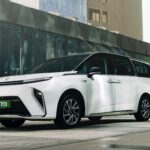Tesla is poised to ignite India’s nascent electric vehicle (EV) market with the opening of its first showroom in Mumbai’s upscale Bandra Kurla Complex (BKC) on July 15, 2025, followed by a second in New Delhi’s Aerocity later in the month.
While the entry of the global EV behemoth is generating considerable excitement, analysts offer a cautious assessment of its immediate market penetration, highlighting the formidable barriers of high price points, limited charging infrastructure, and intense competition from entrenched domestic players and emerging foreign rivals.
Initial vehicle deliveries, expected to begin in August 2025, will comprise imports from Tesla’s Berlin Gigafactory. The Model Y is anticipated to be the flagship offering, likely priced around $72,000-$84,000 (₹60-70 lakh) ex-showroom. This pricing positions it squarely against existing luxury EV offerings from Mercedes-Benz, BMW, and Audi, and directly competes with models like the BYD Seal, Volvo EX40, and BMW iX1. A Model 3 could potentially be introduced at a more accessible $42,000-$48,000 (₹35-40 lakh), targeting a premium segment that also includes vehicles from domestic players like Tata and Mahindra. Speculation of an even more affordable model starting around $25,000 (₹21 lakh) persists, though details remain unconfirmed.
Policy Concessions and Investment Calculus
Tesla’s long-anticipated entry has been facilitated by India’s updated Scheme for Manufacturing of Electric Cars (SMEC), introduced in March 2024. This policy offers a significantly reduced import duty of 15% for EVs priced above $35,000, contingent on a commitment to invest at least $500 million in a local manufacturing plant within three years and achieving specific domestic value addition (DVA) targets. This marks a notable shift from previous import duties of 70-100%, which had been a major point of contention between Tesla and the Indian government.
Tesla has already leased a 4,003 square-foot showroom space in Mumbai at a monthly rent of approximately $42,300 (₹35.26 lakh) and is actively hiring for various retail roles, signaling a tangible commitment to establishing a physical footprint. While discussions with the Indian government suggest a potential $2 billion manufacturing plant by 2027, potentially announced at the Vibrant Gujarat Global Summit in January 2026, Tesla’s immediate strategy is to assess market demand through imported units. This cautious approach aligns with reports indicating Tesla’s significant global overcapacity (around 60%) and a current slowdown in EV sales, reducing the urgency for new large-scale production facilities.
Expert Perspectives: A Niche Market Entry
Auto experts largely concur that Tesla’s initial market impact will be confined to a niche, affluent segment. Venugopal Garre of Bernstein emphasizes that the Model Y’s estimated price range, even with reduced duties, makes it prohibitive for a mass market where the average new car transaction price in India is around $14,000. Kumar Rakesh from BNP Paribas India points out that even a Model 3 or Y, priced at approximately $37,500 in the U.S. after federal subsidies, would still be a premium offering in India after local taxes and duties, far beyond the reach of the average consumer.
Kwan Wongwetsawat from GlobalData raises concerns about Tesla’s practicality for Indian road conditions, citing its low ground clearance. Furthermore, while India’s charging infrastructure is growing, it remains limited compared to more mature EV markets, posing a challenge for Tesla’s premium vehicles that rely on robust Supercharger networks.
Competitive Dynamics: Local Strongholds and Emerging Rivals
Tesla enters a fiercely competitive landscape shaped by domestic giants and an intriguing mix of international players:
- Domestic Dominance: India’s EV market, valued at an estimated $8.49 billion in 2024, saw total EV sales of nearly 2 million units (1.94 million) in 2024. However, four-wheelers constitute a smaller segment (around 4.4% of car and SUV retails in June 2025). Tata Motors has historically dominated the passenger EV segment, though its market share saw a reduction from around 70% in early 2024 to about 53% in 2025. Mahindra & Mahindra also holds a significant position, particularly with more affordable models under $10,000. These domestic players benefit from established dealership networks, localized supply chains, and models specifically tailored to Indian conditions and price sensitivities.
- Chinese Constraints: Chinese automakers, despite their global scale, face significant geopolitical and regulatory hurdles in India. MG Motor India (owned by China’s SAIC), the most established Chinese player, operates a manufacturing plant and offers models like the ZS EV and Windsor EV that compete with Tesla in the premium segment. However, MG has faced FDI approval delays and scrutiny, while others like Great Wall Motor and BYD have seen their ambitious manufacturing plans in India thwarted due to security concerns stemming from Sino-Indian border disputes. This effectively creates a “clear white space” for Tesla in the premium segment, as noted by Puneet Gupta from S&P Global Mobility.
- Vietnamese Vanguard: Vietnam’s VinFast poses a compelling challenge. With an announced $2 billion investment to establish a manufacturing and battery plant in Tamil Nadu, expected to begin production by mid-2026, VinFast plans to introduce 2-3 e-SUV models. Its focus on local production and potential benefits from lower import tariffs under ASEAN agreements could give it a pricing advantage over Tesla’s initial imported vehicles, directly challenging models like the Model Y and Model 3.
Long-Term Outlook: Localization as the Linchpin
Industry analysts largely concur that Tesla’s ability to achieve significant scale in India, beyond being a niche “status symbol,” will depend on its commitment to local manufacturing. Sathyanarayana Kabirdas of Frost & Sullivan believes Tesla’s global brand and technological prowess could accelerate EV adoption in India, benefiting local suppliers if production is localized. However, Electrek’s report on Tesla’s global overcapacity (around 60 per cent) and declining sales globally may reduce the immediate impetus for building new plants.
While the Indian government’s SMEC policy represents a strategic compromise, balancing Tesla’s desire to test the market with India’s “Make in India” imperative, the path forward remains complex. Domestic automakers’ lobbying power and ongoing bureaucratic hurdles mean that further policy concessions or a streamlined manufacturing setup for Tesla will likely be subject to continued negotiation.
Tesla’s entry into India, while symbolic of the nation’s growing EV ambition, is set to be a pragmatic, incremental expansion. Its immediate success will largely hinge on attracting a limited, affluent consumer base. The true transformative impact, and Tesla’s ability to compete on a broader scale, will only materialize if and when it commits to substantial local production, thereby addressing the critical factors of affordability, infrastructure, and competition in India’s dynamic and price-sensitive automotive market.


![tesla-x[1]](https://southasianherald.com/wp-content/uploads/2025/07/tesla-x1.jpg)



